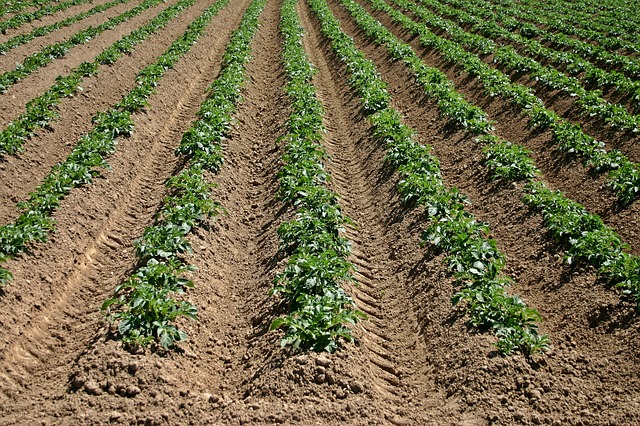Potatoes are the most important native vegetable crop, with Irish consumers purchasing on average over 85kgs per person in 2017. Like all other crops in the field, they have been badly affected by the current drought conditions. A severe lack of rain has stopped crops from growing during the crucial bulking up phase of growth. While some growers have access to irrigation, approximately 75% of the national crop has not received irrigation this year. The relatively late start to the season, combined with a reduction of approximately 14% in the overall area planted, means that supplies of potatoes to customers are likely to be very tight this year.
“The situation in the northeast is critical,” according to Shane Kennedy Teagasc potato advisor based in Drogheda, “Crops that have been irrigated are growing well, however those that have not received water are not growing at all, tubers are small and many have been infected by common scab”. Kennedy goes on to say that “it is very difficult to predict overall yield at this stage, but crops could easily be back by 20% on average”.
It’s a similar story in the south-east where some early and main crops have suffered badly. “Skin finish has been affected in crops that are not irrigated,” said John Pettit Teagasc Potato advisor based in Johnstown Castle, County Wexford. “Tuber bulking has been significantly affected where crops have received no irrigation. Foliage on these crops is also starting to die back leaving very poor yield potential in such crops. Irrigated crops, however, are looking very well with good yield potential and excellent skin finish. With some growers having applied as much as eight applications of water with an irrigator the additional costs incurred are very significant.”
“While crops in Donegal have not suffered as much from drought conditions as further south some crops have required irrigation”, according to Martin McCullough Teagasc Letterkenny. “It has been dull and overcast for the last couple of weeks with rainfall of 10-20mm on a couple of occasions which has definitely helped the situation. Overall crops look well and provided there is some rain over the next couple of weeks we should be over the worst of it”.
Shay Phelan, Teagasc Potato Specialist recommends growers assess each crop to see if there are actions that can be taken to preserve yields and quality in crops and should also consult with their customers sooner rather than later. He said: “there is not a lot that growers can do to crops that haven’t been irrigated to date to improve skin finish or yield therefore it may well be better to concentrate on existing irrigated crops”.
Growers should talk to their customers to discuss quality parameters such as skin finish and final saleable size. Skin blemishes, mainly caused by common scab, are purely cosmetic and have no impact on cooking or eating quality.
Farmers should also consult with financial institutions to see if they can get access to additional credit if needed. “It is better to be pro-active with the stakeholders and try to deal with the problem now rather than waiting and trying to deal with it next winter”, added Shay.
Teagasc advisors are available to discuss these issues with farmers at local offices around the country.












